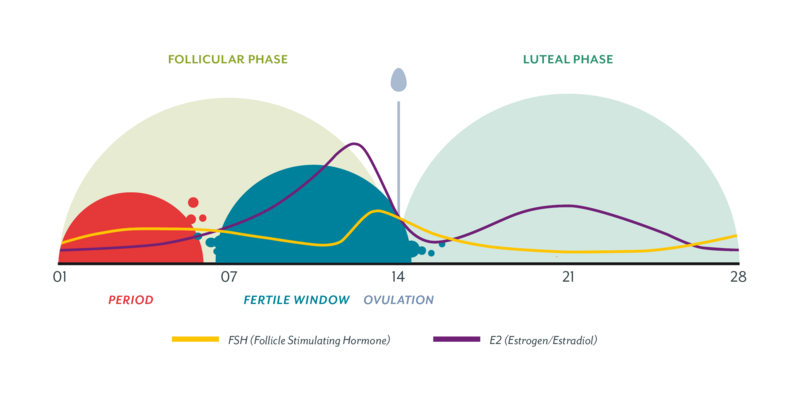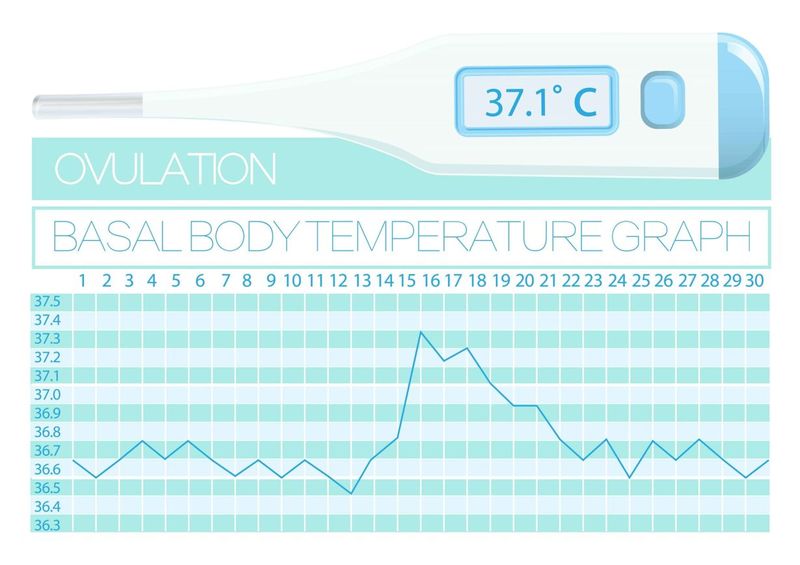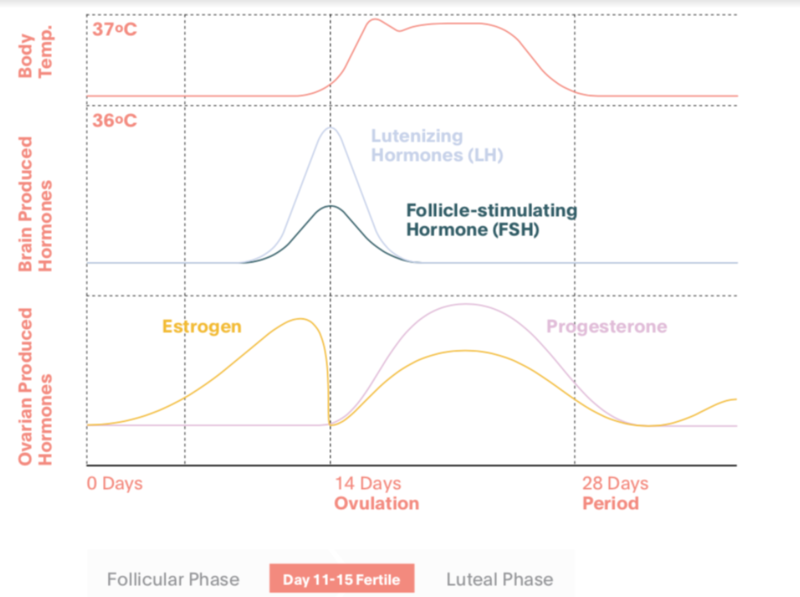Registered dietitian, functional nutritionist, & your new fertility BFF. I'm passionate about helping women thrive during preconception, pregnancy, and postpartum.
Nutrition
PCOS
Fertility
View All
Explore the blog
Hi, I'm Anabelle
Non-toxic Living
Work with our team
How to Find Your Fertile Window
Do you know when your fertile window is?
I’ll be honest, I never even tracked my period before this past year. My period was something I dealt with, not something I was particularly interested in or fond of.
But once I started down this TTC journey, I became fascinated with periods, ovulation, and all the cascade of hormones that beautifully come together to make this ish happen.
SO WHAT IS A FERTILE WINDOW?
Your fertile window refers to the most fertile days in your menstrual cycle which give you the highest chance of conceiving. The most fertile days in your cycle are the days leading up to ovulation, before the egg is released from the ovary.
Alright, let’s get down into it.
The BEST way to know if and when you’re ovulating is:
- Measuring your BBT – basal body temperature
- Noticing your CM – cervical mucus
[Note: Some people like to use Ovulation Predictor Kits (OPKs), but this will not show if you’ve actually ovulated, rather it detects the LH surge that precedes ovulation.]
BBT:
Your basal body temperature shows you if you’ve already ovulated, not that you’re about to. When an egg is released, the body starts producing progesterone, which raises your body temperature.
Thus, your basal body temperature (BBT) increases after you ovulate, and tracking this can be one way of verifying ovulation.
If you track your BBT every day, you should see an increase at least by 0.72 °F (0.4 °C) the day after you ovulate.
- In the first phase of the cycle, BBT usually stays below 98.6 °F (37 °C). Most often BBT falls between 97.52–98.24 °F (36.4–36.8 °C) because of low progesterone concentration.
- One day before ovulation, a luteinizing hormone (LH) peak is observed, which can be accompanied by an additional decrease in temperature by 0.36–0.54 °F (0.2–0.3 °C.)
- After ovulation, the progesterone level sees a sharp increase (approximately 10-fold), which causes a temperature leap above 98.6 °F (37 °C.)
With an adequate corpus luteum function, it will stay at this level for 10–14 days.
If the fertilized egg doesn’t implant, the progesterone level and basal body temperature will decrease before menstruation.
How to track BBT:
- Take your temperature every morning at the same time.
- Stay in bed when taking your temperature.
- Always measure the temperature in the same way
- Use the same thermometer (electronic or other).
- You should have had at least 3 hours of sleep before taking the temperature.
Note: Your temperature can change based on other factors aside from ovulation such as lack of sleep, stress, if your immune system is compromised, etc.
CERVIAL MUCUS
I like this image as it brings everything together, all the hormones, temperatures, and phases of the menstrual cycle. I know this stuff can get really confusing, which is why I like the BBT and CM method – because you’re literally getting in tune with your body and your own individual cycle.
Too Long Didn’t Read: Track your temperature daily and notice the white sticky stuff in your underwear to accurately know when you’re ovulating, aka baby making time.
Questions? Interested in more fertility topics? Comment below!
Leave a Reply Cancel reply
The Preconception Playbook
This free playbook provides specific actionable tips to get started on your fertility journey, as well as what to avoid while you're trying to conceive.
Get the free playbook
Functional nutrition for women & couples trying to conceive
Get the Preconception Playbook
Actionable tips to get started on your fertility journey, as well as what to avoid while you're trying to conceive.



Be the first to comment